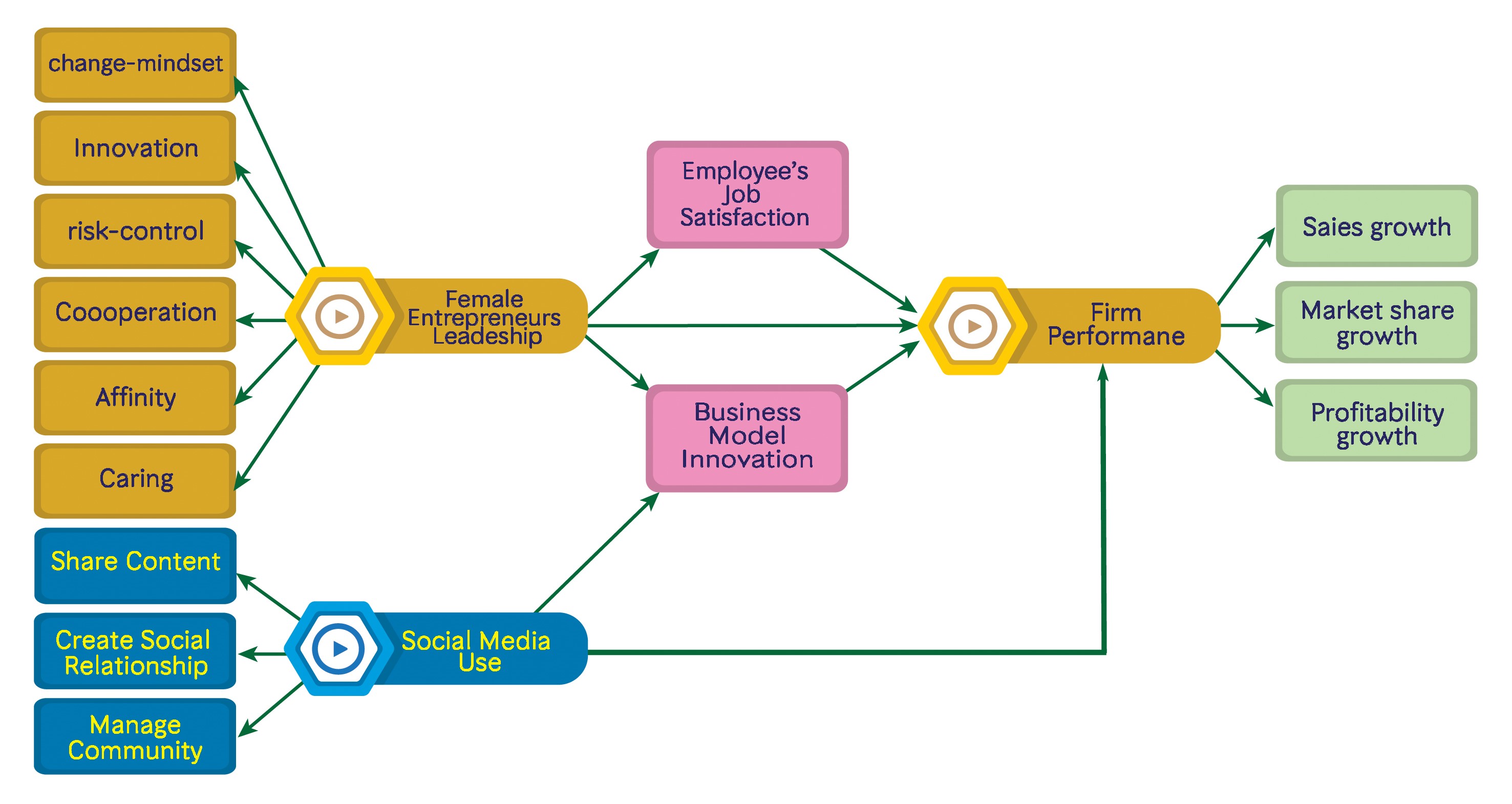Exploring the Impact of Female entrepreneurs’ Leadership characteristics, Social media use, Business Model Innovation and Employee’s Job Satisfaction on Firm Performance
Main Article Content
Abstract
The purposes of this research were 1) to study role of female entrepreneurs leadership in firm performance, 2) to find impact of female entrepreneurs leadership characteristics on business model innovation and job satisfaction, 3) to find impact of social media use on firm performance. Research objectives 1 and 2 adopt quantitative research methods since the questionnaire was organized on the basis of the previous maturity scale. The objective 3 is used mixed method (quantitative and qualitative methods). For quantitative research,the sample is 385 Chinese female entrepreneurs from China Association of women entrepreneurs (CAWE). The proportional random sampling method was used a questionnaire to collect data. Statistical analysis is conducted through the use of structural equation modeling (SEM) analytical techniques using Smart PLS. For qualitative research, semi-structured and in-depth interviews with 15 female entrepreneurs who use social media operation were to collect data.
The results of qualitative research showed that: a major challenge in measuring firm performance lies in adapting traditional performance measurement methods to social media. But the results of the interview can still prove it social media use motivation, social media use learning approach and social media use methods are important reasons for social media use performance, which should be evaluated from both non-financial attention and financial sales. To sum up, this study established a link between female Entrepreneurs’ leadership characteristics, social media use, business model innovation and employee’s job satisfaction on firm performance. These variables composed the conceptual model of this study and represented the basic process of female leadership characteristics and social media use making an impact.
Article Details

This work is licensed under a Creative Commons Attribution-NonCommercial-NoDerivatives 4.0 International License.
เพื่อให้เป็นไปตามกฎหมายลิขสิทธิ์ ผู้นิพนธ์ทุกท่านต้องลงลายมือชื่อในแบบฟอร์มใบมอบลิขสิทธิ์บทความ ให้แก่วารสารฯ พร้อมกับบทความต้นฉบับที่ได้แก้ไขครั้งสุดท้าย นอกจากนี้ ผู้นิพนธ์ทุกท่านต้องยืนยันว่าบทความ ต้นฉบับที่ส่งมาตีพิมพ์นั้น ได้ส่งมาตีพิมพ์เฉพาะในวารสาร วิชาการธรรม ทรรศน์ เพียงแห่งเดียวเท่านั้น หากมีการใช้ ภาพหรือตารางของผู้นิพนธ์อื่นที่ปรากฏในสิ่งตีพิมพ์อื่นมาแล้ว ผู้นิพนธ์ต้องขออนุญาตเจ้าของลิขสิทธิ์ก่อน พร้อมทั้ง แสดงหนังสือที่ได้รับการยินยอมต่อบรรณาธิการ ก่อนที่บทความจะได้รับการตีพิมพ์References
Dorta-Afonso, D., Gonz ́ alez-de-la-Rosa, M., (2022). High-performance work systems. In Buhalis, D. (Ed.), Encyclopedia of Tourism Management and Marketing. United Kingdom: Edward Elgar Publishing.
Franke, G., & Sarstedt, M. (2019). Heuristics versus statistics in discriminant validity testing: a comparison of four procedures. Internet Research, 29(3), 430-447.
Hair, J., et al. (2019). When to use and how to report the results of PLS-SEM. European Business Review, 31(1), 2-24.
Henseler, J., Ringle, C., & Sarstedt, M. (2015). A New Criterion for Assessing Discriminant Validity in Variance-based Structural Equation Modeling. Journal of the Academy of Marketing Science, 43(1), 115-135.
Hitt, M. A., & Ireland, R. D. (2015). The Black well encyclopedia of management: Entrepreneurship. Oxford, UK: Blackwell Publishers.
Kelley, D. J., et al. (2011). Global Entrepreneurship Monitor (GEM) 2010 Women's Report. London: GEM.
Likert, R. A. (1932). Technique for the Measurement of Attitude. Archives Psychological, 3(1), 42-48.
Mason, A. N., Narcum, J., & Mason, K. (2021). Social media marketing gains importance after Covid-19. Cogent Business & Management, 8(1), 1870797.
Moudrý, D. V, & Park Thaichon, P. (2020). Enrichment for retail businesses: How female entrepreneurs and masculine traits enhance business success. Journal of Retailing and Consumer Services, 54, 102068.
Saebi, T., Lien, L., & Foss, N. (2017). What Drives Business Model Adaptation? The Impact of Opportunities, Threats and Strategic Orientation. Long Range Planning, 50, 567-581.

